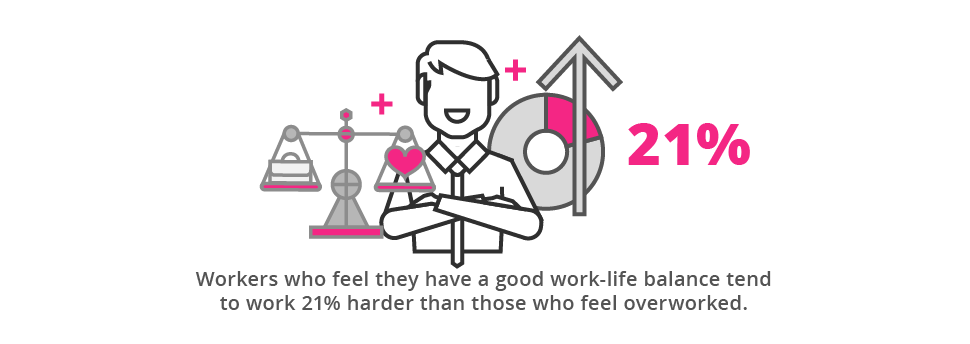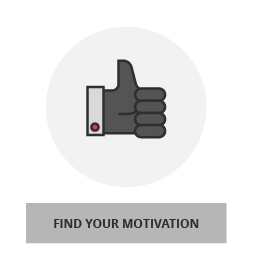How to achieve work-life balance
In 2006, 53% of employees felt like that had a good work-life balance, but that number had dropped to 30% by 2009.1 With the proliferation of technology in the workplace, disconnecting yourself from your work is getting more and more difficult.
In contrast to this trend towards always being plugged into the work network, the most productive employees have been shown to be those with well-rounded priorities. Workers who feel they have a good work-life balance tend to work 21% harder than those who feel overworked.2

Feeling like you aren’t rationing your time properly between working and living? Use the following 4-step framework to bring some harmony to your life.
1. Track your time
Keeping a log of the time you spend on specific tasks allows you to look back at a period and figure out why you may have needed to work more than you wanted. Once you have identified problem areas in your time allocations, you can work towards evening out the discrepancy between work and play.
Be sure to include both work-related and personal activities in your time budget. This will also allow you to spend less time on low-value activities, and maximise all the personal time you have to play with.
2. Establish boundaries
Decide on what work you will and will not do while at home. Setting clear, fair boundaries for yourself and your employers to work with is a vital part of developing a healthy balance.
Make your boundaries clear to yourself, your colleagues and employers, and your family. Ask them to adhere to these limits, and hold you accountable. The desire to get work done while at home or away from the office is strong when assignments need finishing, so holding yourself to this rule will take some effort on your part.
3. Look after your health
People who exercise for an hour a day display improved concentration,3 reduced stress levels, improved disposition, and boast higher productivity.4 Powering through your workload is easier when you are happier and more productive, reducing the need for overlap in your work and personal schedules.

But keeping yourself physically fit is only half the battle. Emotional, mental, and physical wellbeing are important factors to consider. How ever many hours of sleep you need at night, make sure you get them. If you are struggling with some emotional or psychological issues and need to talk to someone, seek out your organisation’s counsellor. Avoiding alcohol and tobacco can also help reduce the level of physical stress your body goes through, in turn improving your health.
4. Exercise your flexibility options
The age of remote working is upon us, with more and more forward-thinking organisations creating policies that encourage work-life balance. Investigate what options you have with regards to flexitime, telecommuting, job-sharing, and possibly moving into a freelancing role.
Being able to control where and how you work enables you to free up valuable personal or family time that a standard 905 wouldn’t allow. If your company doesn’t currently provide a flexible working plan, consider proposing one.
Own your professional development with these related frameworks for personal growth:
2 Inc.


